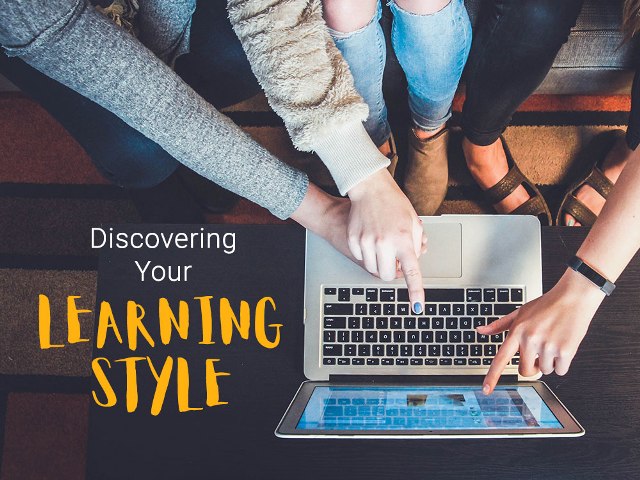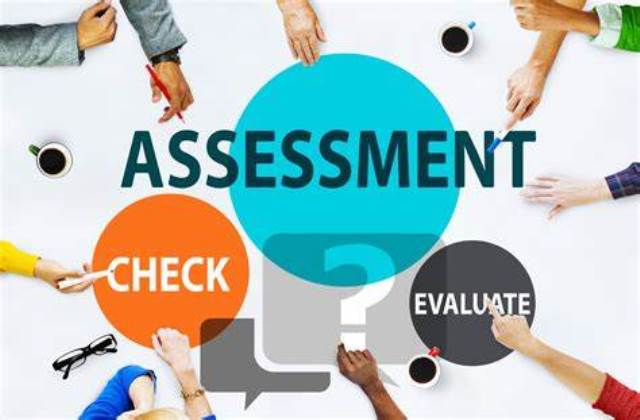For Students
Discovering Your Learning Style: A Path to Academic Success
Admin Jul 28, 2023 12:26 PM

TAGS
Recognizing your learning style is a fundamental step towards becoming an efficient and effective learner. Each individual possesses a unique combination of cognitive preferences, which influence how they process and retain information. Understanding your learning style allows you to tailor your study methods, adapt to different learning environments, and maximize your educational experience. There are three main learning styles: visual, auditory, and kinesthetic, and individuals can identify their preferred style to optimize their learning journey. Let’s explore various learning styles, strategies to help you recognize your learning style and use it as a tool to excel in your academic pursuits.
Part 1- Understanding Different learning styles
- Visual Learners:
Visual learners primarily rely on their sense of sight to comprehend information effectively. They learn best through visual aids such as graphs, charts, diagrams, and illustrations. In a classroom setting, visual learners benefit from the use of PowerPoint presentations, videos, and whiteboard demonstrations. When reading, they may engage better with books that contain pictures or prefer to create their mind maps and flashcards.
To identify whether you are a visual learner, consider how you recall information. Do you remember things better when you see them written down or depicted visually? Do you enjoy using colors and highlighting while taking notes? If yes, you might have a visual learning style.
2. Auditory Learners:
Auditory learners absorb information best through listening and speaking. They enjoy participating in discussions, lectures, and audio-based learning materials. While reading, they may prefer to read aloud or engage in group discussions to solidify their understanding. Audiobooks, podcasts, and recorded lectures are valuable resources for auditory learners.
To determine if you are an auditory learner, pay attention to how you process information. Do you often repeat information out loud to remember it better? Do you enjoy storytelling or find it easier to understand concepts when explained verbally? If so, you likely have an auditory learning style.
3. Kinesthetic Learners:
Kinesthetic learners, also known as tactile learners, learn best through hands-on experiences and physical activities. They thrive in interactive environments where they can engage in experiments, role-playing, and practical applications of knowledge. Kinesthetic learners tend to fidget when sitting still for extended periods and may benefit from taking short breaks during study sessions.
To recognize if you have a kinesthetic learning style, think about how you learn new skills or remember information. Do you prefer to learn by doing rather than simply observing or listening? Do you excel in subjects that involve physical movement, such as sports or crafts? If these traits resonate with you, you are likely a kinesthetic learner.
Part 2- Discover your Learning Style
Recognizing your learning style is a transformative journey that can significantly enhance your academic performance and personal growth. By engaging in self-reflection, taking learning style assessments, observing study habits, seeking feedback, and experimenting with different methods, you can gain a deeper understanding of how you learn best. Let’s explore how a student can discover his/her particular learning style that can enhance their academic success rate.
a) Self-Reflection:
Self-reflection is a valuable initial step in identifying your learning style. Take some time to analyze your past learning experiences and evaluate which methods were most effective for you. Ask yourself the following questions:
- Did you find it easier to grasp concepts when they were visually represented through charts, diagrams, or illustrations?
- Did you prefer listening to lectures, audio recordings, or participating in group discussions to enhance your understanding?
- Did you thrive in hands-on activities, experiments, or practical applications of knowledge?
- By assessing your past experiences and preferences, you can start to gain insights into your learning style tendencies.
b) Learning Style Assessments:
Numerous learning style assessments and quizzes are available online or through educational institutions. These assessments are designed to provide a clearer understanding of your dominant learning style. Keep in mind that no assessment is perfect, but they can serve as valuable starting points for self-discovery.
These assessments typically involve a series of questions or scenarios that gauge your preferences in learning environments, study techniques, and information processing. The results may categorize you as a visual, auditory, kinesthetic, or multimodal learner.
c) Observe Study Habits:
Pay attention to your study habits and techniques. Visual learners often prefer using color-coded notes, mind maps, and charts to organize information. Auditory learners may find reading aloud, discussing concepts with others, or listening to recordings beneficial. Kinesthetic learners tend to benefit from physically engaging with materials, like using manipulatives or engaging in hands-on activities.
Observe what makes you feel most engaged and helps you retain information effectively during study sessions. Recognize whether you tend to visualize, verbalize, or physically interact with the content to comprehend it better.
d) Seek Feedback:
Reach out to your teachers, professors, or mentors and ask for their input on your learning style. They have likely observed how you interact with course materials and can provide valuable insights into your strengths and areas for improvement.
Additionally, consider discussing your learning preferences with classmates or study partners. Engaging in collaborative learning experiences may help you identify which study methods and approaches resonate with you the most.
e) Experiment with Different Methods:
To further solidify your understanding of your learning style, experiment with different study techniques. Attempt to incorporate elements from various learning styles into your study routine and assess how each method impacts your comprehension and retention.
For instance, if you identify as an auditory learner, try creating and listening to recordings of key concepts in your own voice. If you are a visual learner, use visual aids like flashcards, diagrams, or videos to reinforce your understanding.
Conclusion:
Understanding your learning style is a powerful tool that can significantly impact your academic success and personal development. Visual learners can employ visual aids and diagrams to enhance their understanding. Auditory learners can engage in discussions and utilize audio-based resources to absorb information effectively. Kinesthetic learners can optimize their learning by incorporating hands-on experiences and practical applications of knowledge.
It is essential to note that most individuals possess a blend of learning styles, with one dominant style. Being aware of this dominant style enables students to tailor their study habits, seek appropriate resources, and communicate their needs effectively with educators.
Regardless of your learning style, cultivating effective study habits, maintaining a growth mindset, and staying motivated are vital elements of successful learning. Embracing diversity in learning styles among peers can also promote collaborative learning environments, fostering a supportive and enriching educational journey for everyone involved.
It is crucial to remember that learning styles are not rigid categories, and individuals may exhibit traits of multiple styles. Embrace the notion of being a multimodal learner, harnessing the strengths from different styles to create a well-rounded approach to learning.
Search
Latest Blogs

Exploring Opportunities in Emerging Engineering field
Admin
Dec 14, 2024 05:18 PM

Navigating College Majors
Admin
Sep 25, 2024 04:04 PM

Tools for Measuring Strengths For Career
Admin
Sep 25, 2024 03:27 PM
Interested in getting latest updates?
SUBSCRIBE


















